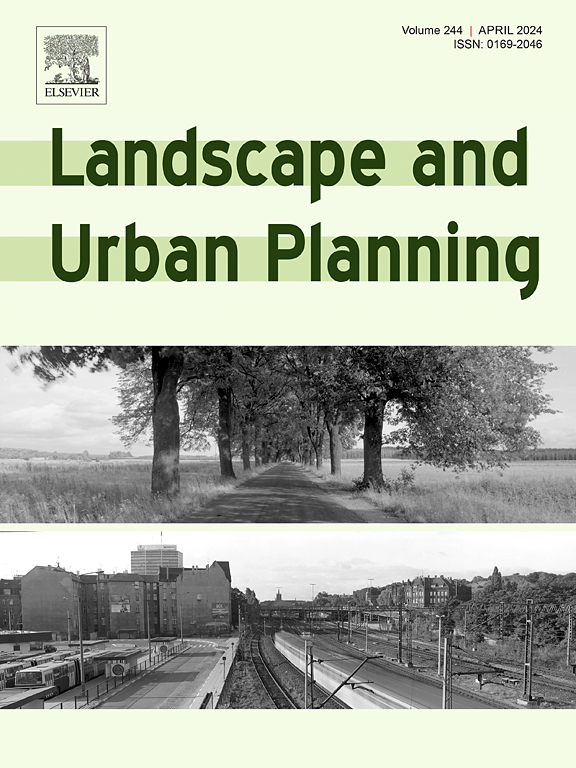River invertebrate biodiversity benefits from upstream urban woodland
IF 7.9
1区 环境科学与生态学
Q1 ECOLOGY
引用次数: 0
Abstract
In urban environments, invertebrate communities are subjected to a broad mixture of impacts, including diffuse pollution. Pollutant mixtures and habitat degradation can combine to apply stress on community diversity. Water quality is influenced by the assemblage and mosaic of catchment land cover. Amongst a wider suite of Nature-Based Solutions, the value of urban woodland is increasingly recognized as having potential to support a range of ecosystem services. Despite an increasing focus on establishing urban woodland for aquatic conservation, its actual influence is yet to be manifested. Therefore, we explored trees’ location in riparian and upstream catchment, within and outside of the urban area. We conducted a combination of systematic literature review and statistical analysis to better understand the woodland influence. Despite the wide range of bioindicators studied and broad worldwide spectrum of geo-climatic regimes covered, literature evidence for benefits were found in at least half the cases. With a focus on the overall family richness and the sensitive orders Ephemeroptera, Plecoptera and Trichoptera family richness as bioindicators, the statistical analysis comprised a national study in England covering 143 sites with substantial urban cover, totaling 4226 invertebrate community observations over 30 years. Two satellite-derived land cover maps were used to enable discrimination between urban and extra-urban woodland. The analysis supported the literature evidence that impervious land had negative effects and woodland positive effects. In the urban and upstream catchment, woodland was more important than pasture or cropland. There was some evidence of those woodland effects being more advantageous when trees are located within the urban area itself. Benefits attributable to woodland were distinctly apparent against a backdrop of improving macroinvertebrate diversity found to be synchronous with long-term reductions in urban pollution signatures. The presence of sparse land, even in small amounts, was detrimental to macroinvertebrate diversity. These areas of low vegetative cover might be detrimental due to high sediment input and legacy industrial contamination. Given the increasing accessibility of land cover data, the approach adopted in this case study is applicable elsewhere wherever macroinvertebrate community data are also available.
上游城市林地造福河流无脊椎动物生物多样性
在城市环境中,无脊椎动物群落受到包括弥散污染在内的多种影响。污染物混合物和栖息地退化会对群落多样性造成压力。水质受到集水区土地覆盖的组合和镶嵌的影响。在一系列更广泛的基于自然的解决方案中,城市林地的价值日益被认为具有支持一系列生态系统服务的潜力。尽管人们越来越重视建立城市林地以保护水生生物,但其实际影响尚未显现。因此,我们探讨了树木在河岸和上游集水区、城区内外的位置。我们结合系统的文献综述和统计分析,以更好地了解林地的影响。尽管所研究的生物指标范围很广,所涵盖的地理气候系统也遍布全球,但至少有一半的案例都有文献证据证明树木的益处。统计分析的重点是作为生物指标的总体科类丰富度和敏感目蜉蝣目、褶翅目和翘翅目科类丰富度,包括在英格兰进行的一项全国性研究,该研究覆盖了 143 个有大量城市覆盖的地点,在 30 年内共观测到 4226 个无脊椎动物群落。研究使用了两张卫星衍生土地覆盖图,以区分城市林地和城市外林地。分析结果支持文献证据,即不透水土地有负面影响,而林地有正面影响。在城市和上游集水区,林地比牧场或耕地更重要。有证据表明,当树木位于城市区域内时,这些林地效应更为有利。在大型无脊椎动物多样性不断改善的背景下,林地带来的好处显而易见。稀疏土地的存在,即使数量很少,也不利于大型无脊椎动物多样性的提高。这些植被覆盖率低的区域可能是由于沉积物输入量大和遗留的工业污染造成的。鉴于土地覆被数据越来越容易获取,本案例研究采用的方法适用于其他地方,只要有大型无脊椎动物群落数据。
本文章由计算机程序翻译,如有差异,请以英文原文为准。
求助全文
约1分钟内获得全文
求助全文
来源期刊

Landscape and Urban Planning
环境科学-生态学
CiteScore
15.20
自引率
6.60%
发文量
232
审稿时长
6 months
期刊介绍:
Landscape and Urban Planning is an international journal that aims to enhance our understanding of landscapes and promote sustainable solutions for landscape change. The journal focuses on landscapes as complex social-ecological systems that encompass various spatial and temporal dimensions. These landscapes possess aesthetic, natural, and cultural qualities that are valued by individuals in different ways, leading to actions that alter the landscape. With increasing urbanization and the need for ecological and cultural sensitivity at various scales, a multidisciplinary approach is necessary to comprehend and align social and ecological values for landscape sustainability. The journal believes that combining landscape science with planning and design can yield positive outcomes for both people and nature.
 求助内容:
求助内容: 应助结果提醒方式:
应助结果提醒方式:


